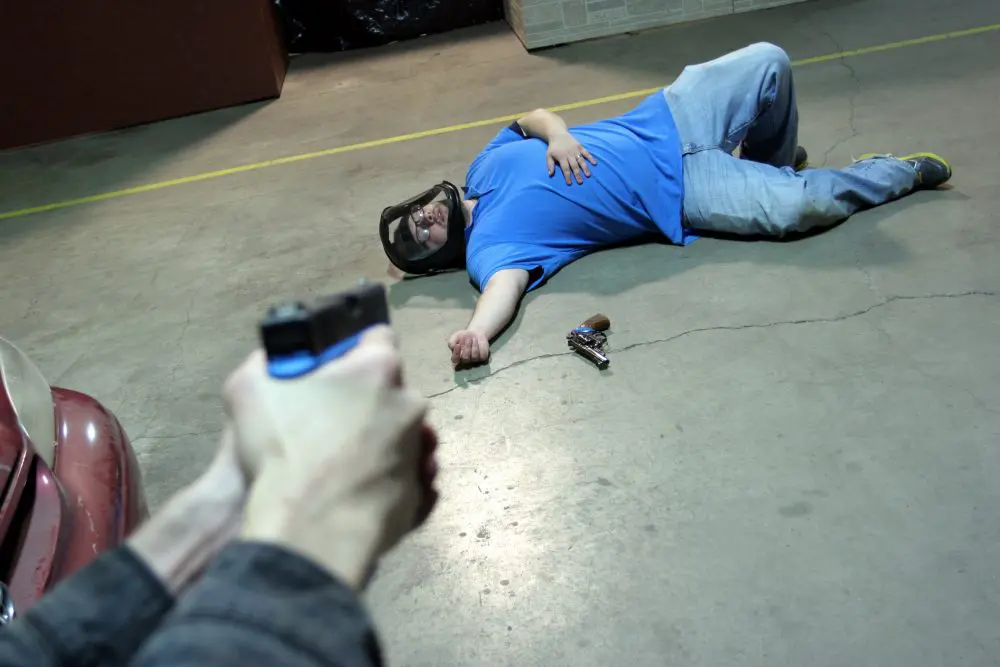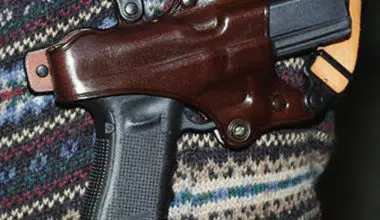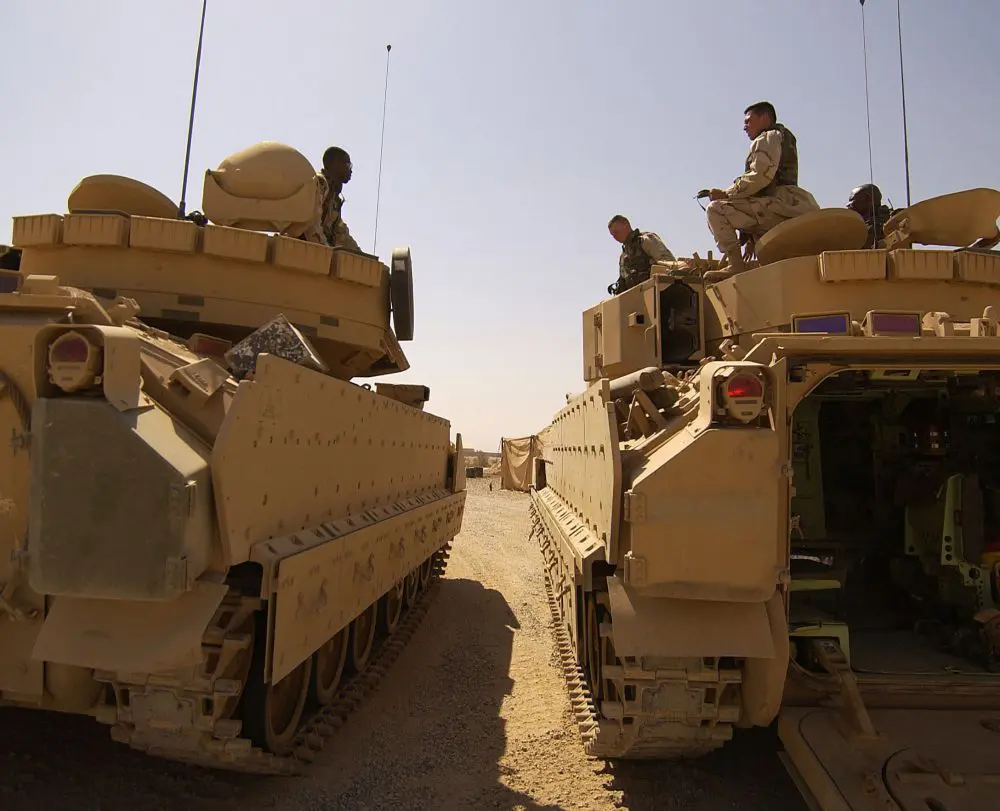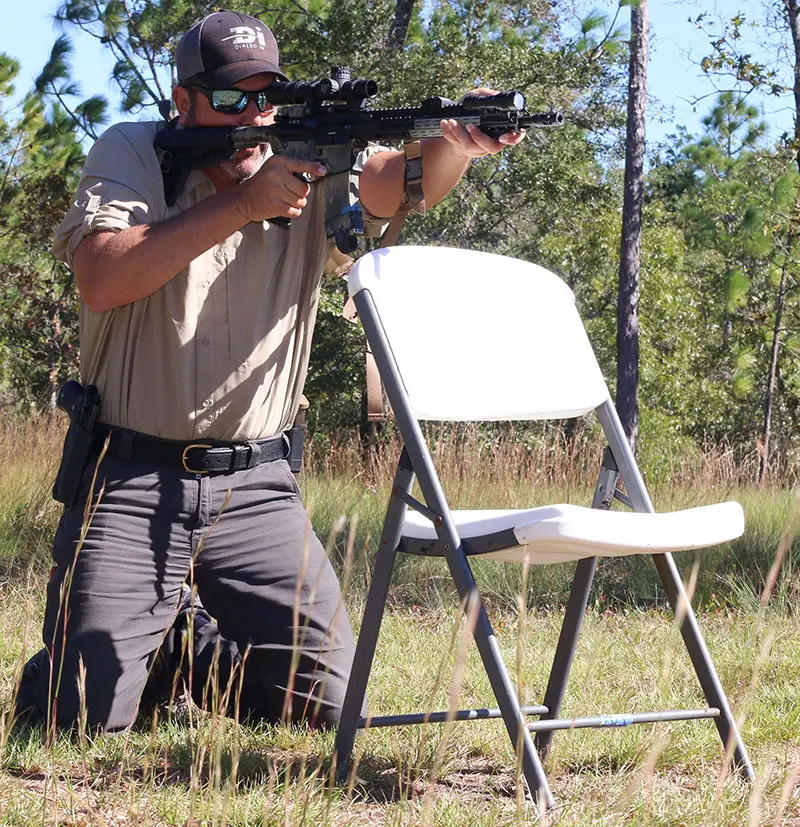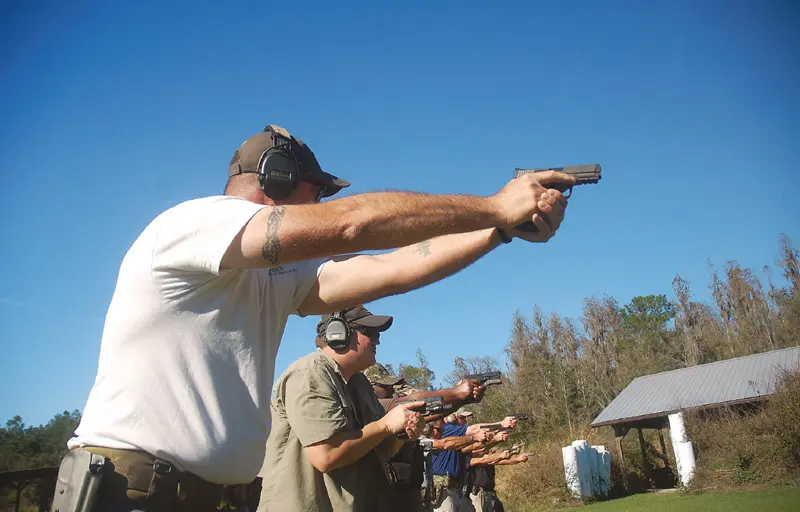
THE tactical community owes a lot to the various competitive shooting sports. They have been the driving force in not only the development of more efficient weapons, but also in sights and other accessories.
In addition, they have led the way in developing technical shooting techniques, some of which greatly benefit the tactical community. Depending on which particular discipline you choose, competitive shooting can teach you accuracy, speed, self-control, shooting and manipulating under stress. These are all worthy attributes and clearly should be learned.
However, not all Tactics, Techniques, and Procedures (TTP) translate well across the board. Nor should they. In fact, tactics rarely enter into the competitive shooting sports unless it is a term used to define a technique that formulates a rule. And in and of itself, there is nothing wrong with that.
Table of Contents
REHOLSTERING IN COMPETITIVE SHOOTING
Competitive shooters are primarily concerned with two closely related techniques: marksmanship (hitting the target) and weapons manipulation. And very good shooters do those very well. After they complete their string of fire, they are finished. That is, after the last shot is fired, they withdraw from the instant. As some (many?) competitive exercises require that the competitor “unload and show clear,” there is absolutely no reason to do any more shooting, as this would be a safety violation.
As a result, the shooter snaps the pistol back to a close-retention position, unloads it, and “speed holsters”—rapidly puts the pistol into the device it is carried in. Considering that holstering an empty pistol is dictated by a governing body as a procedure, this makes sense. Some then speed holster, as there is no need to keep the gun out. The stage is over, the requisite number of shots fired, and others are waiting their turn.
And to some, speed holstering looks cool. It shows the mastery of man over machine, and style points are important in some endeavors. But herein lies the problem. When you are engaging paper bad guys, they do not shoot back. And no matter where you hit, no matter how fast or slow you are, how many shots you fire, that piece of cardboard/paper will do nothing but remain stationary.
So yanking that gun back, unloading and speed holstering are part and parcel of what is done, and there is no penalty for it. However, when shooting human beings, this is contraindicated. Understanding that how people react to being shot is unique to that particular person at that particular time, you cannot depend on a fixed number of hits to immediately incapacitate them.


REAL-WORLD TTPs
Even solid hits that may in fact be mortal wounds can take several minutes before the flow of oxygenated blood to the brain is disrupted. We too often forget that in the end, the bad guy has a vote in when the fight is over. The nonsense of firing a pair and pausing to assess has been with us for so long that many have come to believe it is somewhat sacred, and a panacea for every armed encounter, when reality is exactly the opposite.
Regardless of your situation, occupation, rank, rate, MOS or political association, most shots fired in a gunfight will not strike your target. It is significantly more difficult to hit a human being who is moving and using/preparing to use deadly physical force against you than it is to fire shots against a benign, stationary, two-dimensional target a fixed distance away from you.
Consequently, you must be prepared to fire additional shots to solve your problem. How many more shots? No one can reliably answer that simply because of the variables involved in using deadly physical force. However, we can say that you should always be prepared to fire one or more additional rounds.
In order to do that, you absolutely must continue to keep your sights on the target until that target is no longer a threat to you or a third person. Snapping the pistol back to your chest immediately upon firing the last round is doing only one thing: taking you out of the fight. A common refrain from those guilty of this is, “If it were for real, I would do it differently.”
Newsflash, Sunshine. You will not do it differently. You will do it exactly the way you have been doing it. You will not rise to the occasion, but rather you will default to your level of training.
ASSESSING
Once the fight is over—when the threat is incapacitated and no longer able to cause you harm—we can start thinking about other things to do. This includes regaining situational awareness, because if you don’t break tunnel vision, you are locked into that one issue to the exclusion of all other issues.
This is normally called search and assess, and assessing includes not only looking for other threats, but also looking for what has changed while you were busy processing your threat. And it should involve assessing your own physical wellbeing. People are often unaware of being injured, and you need to ensure that you are not hurt. It may also include reloading your firearm or calling for assistance (radio or telephone).
But that bad guy lying in front of you may still be capable of causing you harm. Although we are shooting to stop, merely taking him down does not mean he is out of the fight. In fact, he may not even be injured, as people fall down semi-regularly.
Understand that you use deadly physical force within the authority of the law. It does not state that you have to shoot to wound, nor does it say you shoot to kill. You do not shoot somebody “just a little bit” to gain their attention, frighten them, or teach them a lesson. You use deadly physical force against them in order to prevent them from using deadly physical force against you or a third person.
The point is that you, the shooter, cannot pronounce someone dead.

REHOLSTERING ISSUES
While there are several things you should be doing, the one thing you should not be doing is holstering your pistol until you have full control of the situation. Bringing the pistol back into your chest and rapidly holstering it have one thing in common: They are taking you out of the fight. This may be a psychological issue. “If I do nothing else, nothing else will go wrong,” or it may be the result of repeated “training” exercises where you did it wrong. Remember that practice does not make perfect. It only makes permanent.

One other maddening issue related to holstering is not taking sufficient care to get the pistol smoothly into the holster. Let’s face it: if you have just traded shots with another guy, you are probably going to be pretty excited. Placing the pistol back in the holster may not be that easy, no matter how many times you have done it on the square range.
Numerous negligent discharges occur when holstering. The main reason is of course a Rule 3 violation—finger on the trigger when sights are not on target. A secondary cause is when a piece of clothing or equipment insinuates itself into the trigger guard, causing the weapon to discharge—probably into your leg….
While some make an issue of teaching that you should holster while keeping your SA up, consider this. The pistol should only go away when the fight is truly over. Not when your opponent is down, but when he is incapacitated and handcuffed or otherwise restrained or covered by others. Once that happens— once you are positively sure the threat is no longer a threat—reholster. Caveat: if you are an off-duty cop or civilian, I strongly suggest you not have a blaster in your paws when the police arrive.
I am not advocating spending 30 seconds to put the firearm properly in your holster. I am saying glance down, holster and prepare for the admin/legal issues that will follow in the aftermath of a shooting. Taking the time to glance down may spare you a lot of grief.
COOLNESS IS OVERRATED
Lest some be upset at what has been written here, consider the following. No matter what you are carrying, one shot will probably not be sufficient to end a threat. Nor will two, three or more. Each incident is different, and no one knows what it takes to incapacitate anyone until they do it—and that holds true for only one ride.
Don’t give up a tactical advantage to look cool. Speed holstering is stupid. There is no real-world reason to do it. Along those lines, when you do decide to put the firearm away, make sure you do it smoothly and efficiently. Stabbing at the general vicinity of your holster is dumb. You are only holstering after the threat(s) are incapacitated, so why not take the time to give a quick glance and be sure of what you are doing?
A quotable quote is appropriate here:
“On the plains of hesitation lie the blackened bones of countless millions who at the dawn of victory lay down to rest, and in resting died.” —Adlai E. Stevenson
Stay in the fight!
